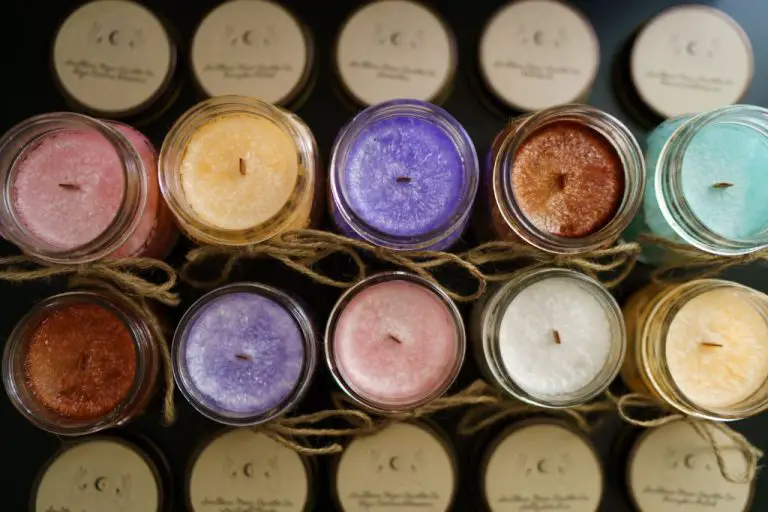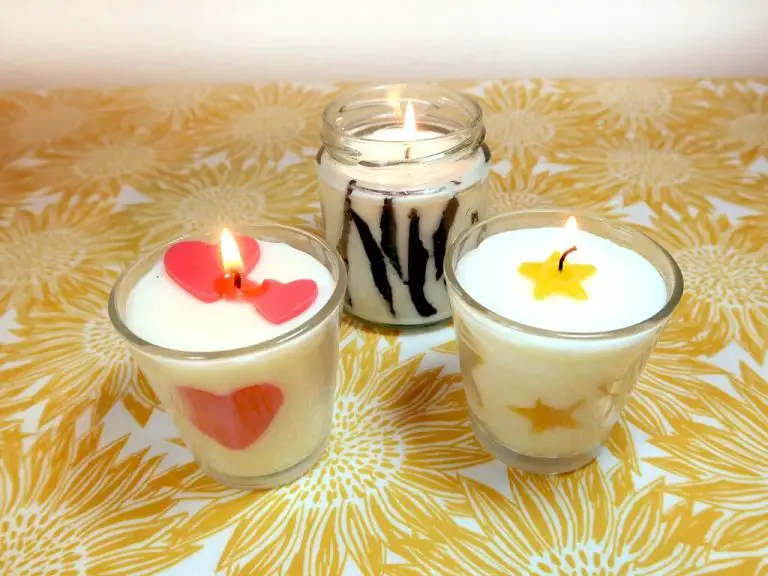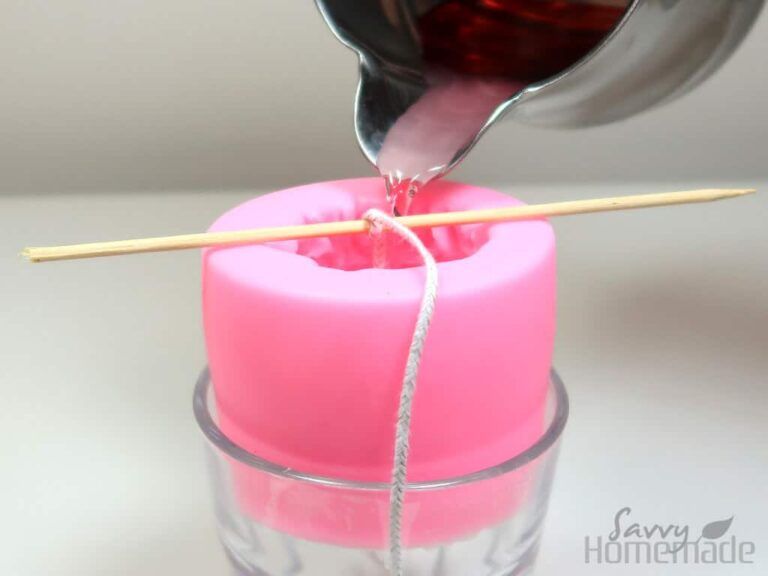Can You Use Soap Dye For Candles?
Soap dye is a special type of coloring made specifically for use in handmade soaps. It is formulated to be pH-stable so the colors remain vibrant even after the soapmaking process which involves high pH levels during lye neutralization. Soap dyes are also body-safe, meaning they are non-toxic and safe for use on skin.
The primary purpose of soap dye is to add color to handmade soaps. Soapmakers use it to create fun colors, swirls, and designs in their soap bars and other bath and body products. Though soap dye is intended for soap, some crafters have discovered it can also be used successfully to color handmade candles, allowing the creation of colorful and artistic candles.
Using Soap Dye for Candles
Using soap dye for candles can be an inexpensive and easy way to add custom coloring to homemade candles. Soap dyes are oil-based, dye blocks specifically formulated for coloring handmade soaps and other bath products. They can also be used effectively in candle making.
Some pros of using soap dyes for candles include:
- Cost Effective – Soap dyes are an affordable option compared to liquid candle dyes.
- Easy to Use – The dye blocks shave easily and mix into wax with minimal effort.
- Vibrant Colors – Soap dyes produce rich, vibrant hues in candles.
- Variety of Shades – By blending soap dye blocks, a wide spectrum of colors can be achieved.
- Non-Staining – Soap dyes are less likely to stain skin or surfaces than liquid dyes.
Some potential cons of using soap dyes for candles are:
- Limited Color Selection – The color palette is not as broad as liquid candle dyes.
- Fading Issues – Some colors, especially reds, may fade over time.
- Not Approved for Paraffin – Soap dyes are only formulated to color vegetable waxes.
- May Clog Wicks – Bits of undissolved dye can potentially clog wicks.
How to Use Soap Dye for Candles
Using soap dye to color candles is a straightforward process. Here are the basic steps:
1. Prepare the candle wax. Start with uncolored, unscented wax. Melt the wax following the manufacturer’s instructions. For best results, use a double boiler to prevent overheating.
2. Prepare the dye. Measure out the desired amount of soap dye. Liquid or powdered dyes can be used. For powders, mix the dye with a small amount of rubbing alcohol or vegetable oil before adding to the wax.
3. Add the dye to the wax. Once the wax is fully melted, stir in the soap dye. Mix thoroughly to distribute the color evenly.
4. Test the color. Drop a spoonful of dyed wax onto a white surface like paper or cardboard. Check that the test color matches your desired shade before pouring the wax into candle jars or molds.
5. Pour and cool. Carefully pour the dyed wax into containers, allowing time to cool and solidify completely before burning. The color may deepen slightly as the candle cools.
Following basic safety measures, soap dye can create rich, vibrant colors in handmade candles. Start with small amounts of dye and increase gradually until reaching the ideal hue.
Recommended Soap Dyes
When using soap dyes for candles, some work better than others. Here are some top recommended soap dyes for coloring candles:
- Stephenson Soap Dyes – These professional-grade soap dyes are highly concentrated and provide vivid, even colors in candles. They’re versatile for use in soy, paraffin, and other waxes.
- Wholesale Supplies Plus Soap Dyes – Another pro-grade option, these dyes stand out for their lightfastness and color intensity in candles and soaps.
- Mad Micas Soap Pigments – These vivid micas disperse nicely in wax while adding shimmer. They come in a wide array of colors from bold primaries to pastels.
- Crafter’s Choice Soap Dyes – These widely available dyes cover all the basics at an affordable price-point. Easy to use in various candle waxes.
- CandleScience Colors – A top pick for candle makers, these liquid dyes offer strong color saturation even at lower usage rates.
Focus on dyes specifically intended for soapmaking rather than food colors or generic liquid dyes. The formulas used in soap dyes help them dissolve and blend optimally in waxes with minimal bleeding or morphing of hues over time.
Dye Amounts
When using soap dyes for candles, it’s important to use the right amount for full, even color saturation. Too little dye will produce a pale or uneven candle, while too much can lead to dyes bleeding or sweating out of the wax. As a general guideline, here are the recommended dye amounts per pound of wax:
- For light or pastel colors: Use 0.5-1 teaspoon of liquid dye or 0.1-0.25 ounces of powdered dye per pound of wax.
- For medium or vibrant colors: Use 1-2 teaspoons of liquid dye or 0.25-0.5 ounces of powdered dye per pound of wax.
- For dark or heavy colors: Use 2-3 teaspoons of liquid dye or 0.5-1 ounce of powdered dye per pound of wax.
These amounts are approximate, as dye strength can vary between brands. It’s best to start with less dye and gradually increase until you achieve the desired color intensity. Making a small test batch first can help dial in the perfect dye quantity before coloring a large batch of candles.
Mixing Dyes
Mixing different colored dyes allows you to create custom shades and hues for your candles. Here are some tips for effectively mixing soap dyes:
- Start with small amounts and add more dye gradually until you achieve the desired color. It’s easier to darken a color than to lighten it.
- Use a glass or stainless steel container when mixing – plastic can absorb some of the dye color.
- Stir thoroughly to fully incorporate the dyes.
- Mixing complementary colors like red and green will create brown hues. Mixing analogous colors like red and orange will tone down the brightness.
- Keep track of the dye amounts as you mix so you can recreate the custom color in the future.
- Test the mixed color on a small piece of candle wax before dying the entire batch.
- Consider making a larger batch of custom mixed dye so you have enough for multiple candles.
With proper mixing techniques, you can achieve beautiful shades for your handmade candles. Be creative and have fun experimenting with color combinations.
Storing Dyed Candles
Proper storage is important for maintaining the color and appearance of dyed candles. Here are some tips for storing candles after dyeing:
– Store finished, dyed candles in a cool, dry place away from direct sunlight and heat sources. Sunlight and heat can cause the candle dye to fade over time.
– Wrap each dyed candle individually in tissue paper before storage to prevent color transfer between candles. The dye may rub off one candle onto another if they touch while in storage.
– Place dyed candles in a sealable plastic bin or box to protect them from dust and other environmental contaminants. Air tight storage helps lock in scent and color.
– Avoid drastic temperature fluctuations. Store candles somewhere with a relatively stable, moderate temperature. Rapid heating and cooling can cause sweating and frosting on the candle surface.
– Candles dyed in lighter colors tend to be more prone to fading. Take extra care to store these properly in low light and moderate temperature conditions.
– Arrange candles standing upright rather than laying horizontally during storage. This helps maintain the shape of poured candles and prevents flat spots on the bottom.
– Check stored candles occasionally for any signs of fading, sweating, or frosting issues. Promptly address any storage problems to maintain candle quality.
With proper storage conditions, the color and appearance of dyed candles can be preserved for a long shelf life, allowing you to enjoy your handcrafted creations for years to come.
Troubleshooting
Candles made with soap dyes can sometimes have issues like poor scent throw, uneven coloring, dye migration, or fading. Here are some common troubleshooting tips:
Poor scent throw – Make sure to use enough fragrance oil, usually 1-1.5 oz per pound of wax. Cure candles for 2 weeks before burning to allow scent to fully disperse.
Uneven coloring – Stir dyes thoroughly into melted wax. Maintain wax at 185-200F when adding dyes. Consider using liquid dyes for better dispersion.
Dye migration – Use higher melt point waxes like soy wax to reduce potential for dyes rising to the surface. Avoid temperature fluctuations while cooling.
Fading – Limit sun exposure which can cause dyes to fade over time. Store finished candles in a cool, dark place. Some dyes like food coloring are more prone to fading.
Following recommended dye amounts, thoroughly mixing, and proper candle making techniques can help avoid many common issues with soap dyes in candles.
Safety Precautions
When working with any type of dye, it’s important to take safety precautions. Here are some tips for safely using soap dyes for candles:
- Wear gloves – Dye can stain skin, so wear disposable gloves when handling dye or mixing colored wax.
- Protect surfaces – Cover counters, floors, and furniture with paper or plastic sheeting to prevent stains.
- Avoid contact with skin & eyes – Be careful not to splash or drip dye on bare skin or eyes. Flush with water if exposure occurs.
- Supervise children – Don’t leave children unattended when using dyes, as ingestion could be harmful.
- Have adequate ventilation – Work in a well-ventilated area to minimize inhaling fumes.
- Clean up spills – Immediately wipe up any spilled dye to prevent stains.
- Wash hands – Thoroughly wash hands after working with dyes.
- Label dyed wax – Clearly label wax that contains dye to avoid confusion.
Following basic safety practices when dyeing candles can help prevent stains, messes, and potential health hazards.
Conclusion
In summary, soap dye can be an effective, affordable, and accessible option for coloring candles. By carefully selecting the right soap dye, measuring dye amounts precisely, and thoroughly mixing the dye into the wax, soap dyes can infuse candles with rich, vibrant hues.
Soap dyes are best suited to container candles rather than pillars or votives. The coloring will sink down in pillar candles. Soap dyes also tend to bleed when burned, so avoid using them for light colored candles. With proper wick size and jar shape, however, container candles colored with soap dyes can burn cleanly and smell great.
Dyeing candles with soap dyes requires some trial and error to find the right dye types, color combinations, and mixing techniques. But the ability to easily produce customized, colorful candles with soap dyes makes the experimentation rewarding.



